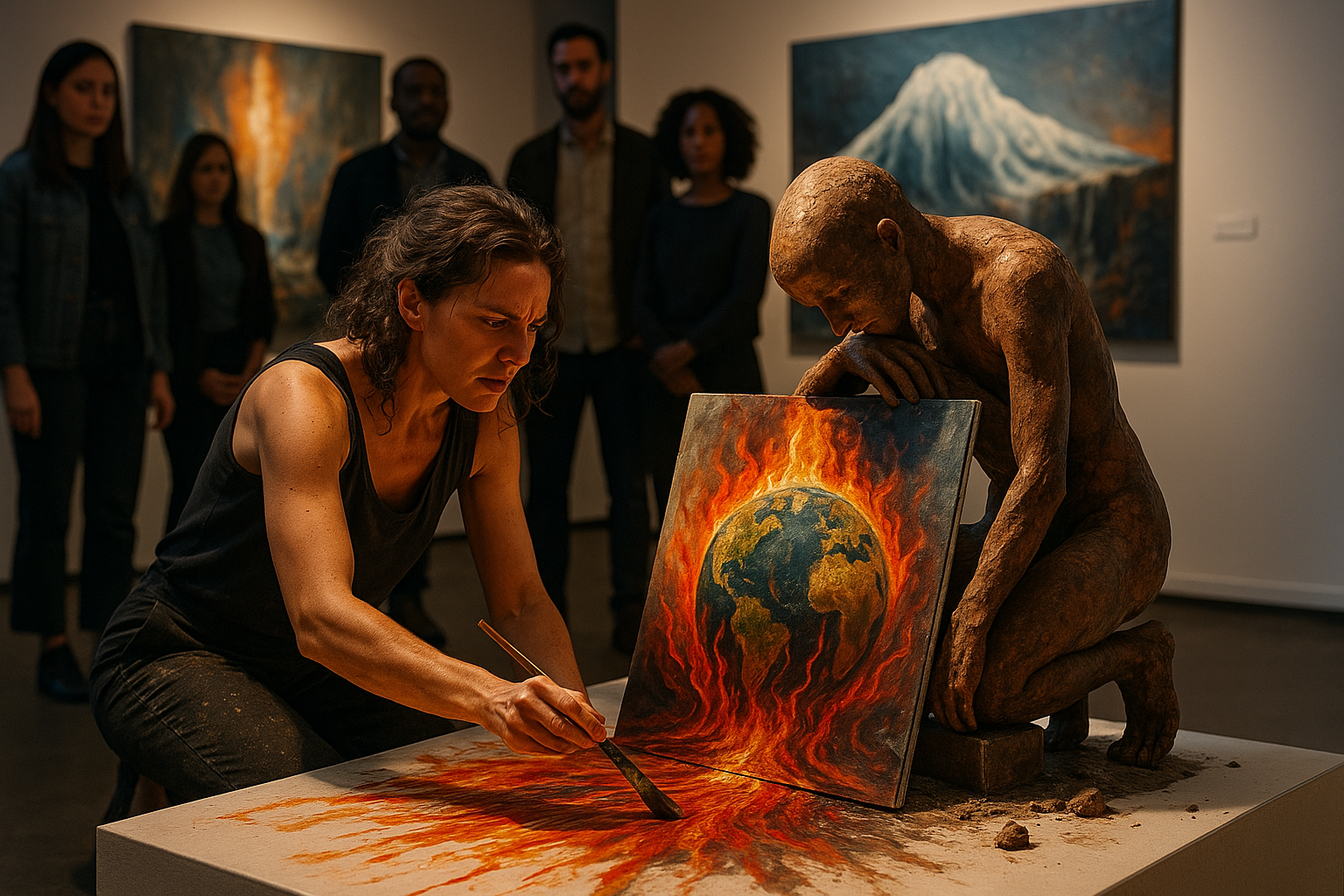Collaborative Frameworks for Cross-Disciplinary Creative Projects
This article outlines practical frameworks for artists, curators, producers, and cultural organisations working across disciplines. It highlights approaches to programming, audience engagement, and operational planning while emphasising inclusive practices and long-term viability for gallery and performance projects.

Cross-disciplinary creative projects bring together artists, technologists, curators, and producers to create experiences that blend gallery-based work, live performance, digital media, and participatory programming. Effective collaborative frameworks provide shared language, clear roles, and logistical systems so that exhibitions, performances, and hybrid events reach diverse audiences while maintaining artistic intent. This article examines curation and production practices, audience engagement strategies, accessibility measures, licensing and monetization considerations, and ways to use analytics to inform sustainable programming.
How does curation shape gallery exhibitions?
Curation is the backbone of a successful gallery exhibition, especially when multiple disciplines are involved. A curatorial framework clarifies thematic priorities, spatial relationships, and the sequence of experiences visitors encounter. For cross-disciplinary work, curators should coordinate with technical teams and artists early to integrate sound, projection, or interactive elements into the gallery footprint. Shared documentation—site plans, content inventories, and risk assessments—helps align expectations and prevents last-minute compromises. Thoughtful curation also defines how to communicate context to the audience through labels, program notes, and onsite mediation.
How can performance and programming integrate across disciplines?
Integrating performance into broader programming requires interoperable schedules, rehearsal spaces, and technical standards. Programming that pairs performance with exhibitions benefits from timeline coordination so live events do not disrupt viewing patterns but rather enhance engagement. Joint production meetings with lighting, sound, and stage teams alongside gallery staff permit technical reconciliation between spaces. Flexible programming models, such as durational performances or multiple short runs, enable audiences to encounter work in different contexts while easing load on production resources.
How to expand audience with livestream and ticketing?
Livestreaming can broaden reach beyond physical attendance, but it must be integrated into ticketing and rights agreements from the start. Consider tiered ticketing that includes in-person, livestream access, and recorded-viewing options. Pricing structures and platform choices influence discoverability and accessibility; ensure platforms support captioning and multiple viewing formats. Ticketing systems should communicate clearly about what each purchase includes and link to visitor guidance. Audience data from ticketing and livestream platforms can help refine promotional strategies and improve future programming.
How to ensure accessibility and sustainability?
Accessibility and sustainability are complementary goals that should be embedded in project planning. Accessibility measures—ramps, clear sightlines, captioning for livestreams, relaxed performances, and descriptive tours—expand audience participation. Sustainable practices include material choices for exhibition build-outs, reuse of sets and hardware, and energy-efficient livestreaming workflows. Budgeting for accessibility and sustainability from the start avoids costly retrofits; include these considerations in contracts and procurement policies so they become operational standards rather than optional extras.
How to handle licensing, monetization, and analytics?
Licensing and monetization strategies must be negotiated early, especially when works are recorded or streamed. Clarify rights for reuse, archival access, and revenue shares for recorded performances. Monetization options include ticketing, pay-per-view streams, curated subscription bundles, and licensing agreements for third-party distribution. Use analytics—attendance figures, streaming viewership, and engagement metrics—to evaluate which models are viable and where revenue can be optimized without compromising artistic control. Keep transparent records of agreements to support fair compensation and future licensing decisions.
What collaboration models support cross-disciplinary work?
Collaboration models range from project-based partnerships to formal consortia and cooperative producer networks. Effective frameworks define shared governance, decision-making processes, and conflict-resolution methods. Role clarity—who handles curation, technical production, audience development, and administration—reduces duplication and improves efficiency. Regular check-ins, shared project management tools, and documented workflows help bridge disciplinary cultures. Consider forming memorandum of understanding documents to outline deliverables, budgets, and timelines so collaborators have a reference point throughout the project lifecycle.
Conclusion
Cross-disciplinary creative projects benefit from structured frameworks that balance artistic experimentation with pragmatic coordination. Prioritising clear curation, integrated programming, inclusive accessibility, thoughtful licensing and monetization, and data-informed analytics helps projects reach wider and more diverse audiences. Sustainable practices and agreed collaboration models reduce friction and build capacity for future work. By documenting processes and sharing learnings, practitioners can strengthen networks that support resilient, audience-minded creative initiatives.





